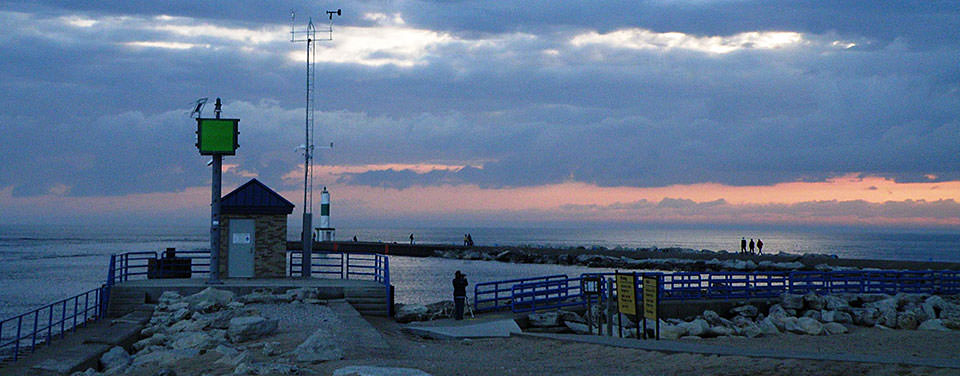Do the Great Lakes have tides?
Water levels in the Great Lakes change primarily because of meteorological effects.

View of the Holland, Michigan water level and meteorological station, located at the entrance to Macatawa Bay. Historic water level data has been collected in this vicinity since 1894.
True tides—changes in water level caused by the gravitational forces of the sun and moon—do occur in a semi-diurnal (twice daily) pattern on the Great Lakes. Studies indicate that the Great Lakes spring tide, the largest tides caused by the combined forces of the sun and moon, is less than five centimeters in height. These minor variations are masked by the greater fluctuations in lake levels produced by wind and barometric pressure changes.
Consequently, the Great Lakes are considered to be non-tidal.
Water levels in the Great Lakes have long-term, annual, and short-term variations. Long-term variations depend on precipitation and water storage over many years. Annual variations occur with the changing seasons. There is an annual high in the late spring and low in the winter. These changes occur at a rate that can be measured in feet per month.
Wind and weather conditions on the Great Lakes may create a seiche, an oscillating wave which can be several feet high. In many of the Great Lakes, the time period between the “high” and “low” of a seiche may be between four and seven hours. As this is very similar to the six-hour time period of the tides on the ocean, it is frequently mistaken for a tide.
Search Our Facts
Get Social
More Information
Last updated: 06/16/24
Author: NOAA
How to cite this article